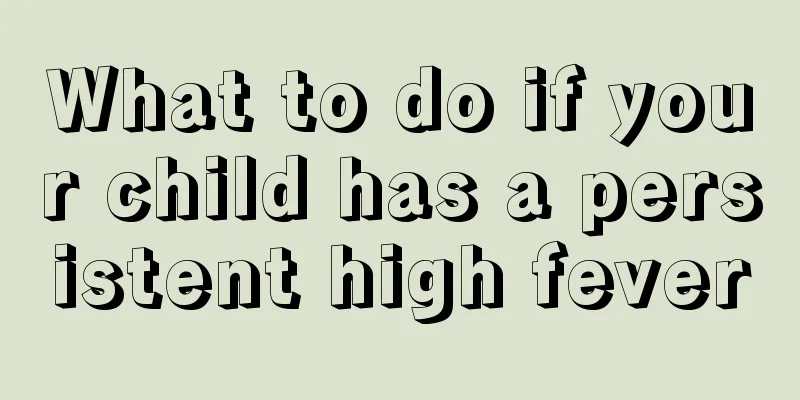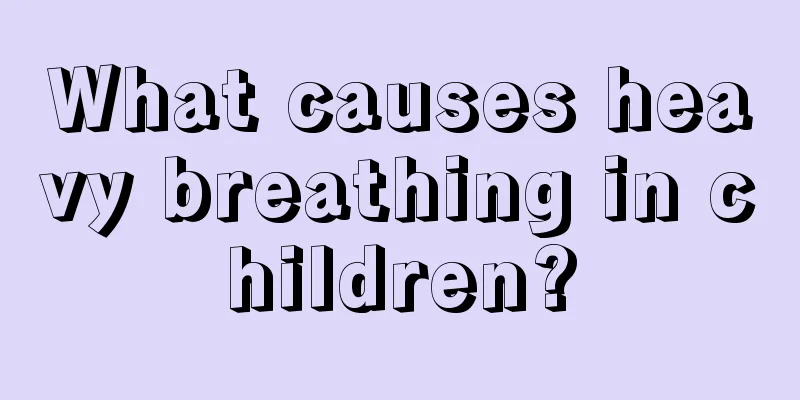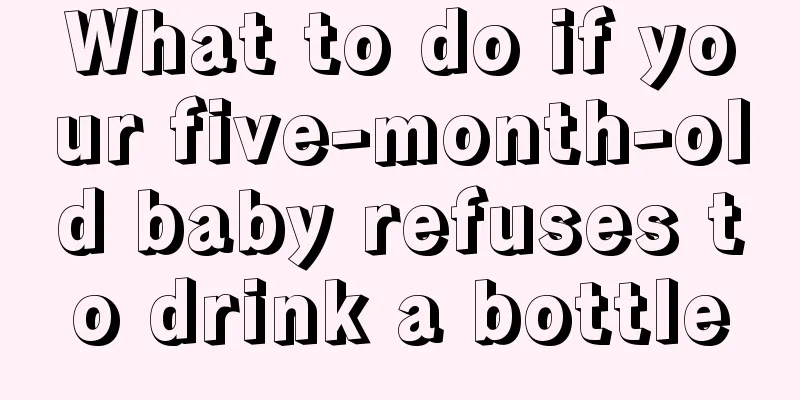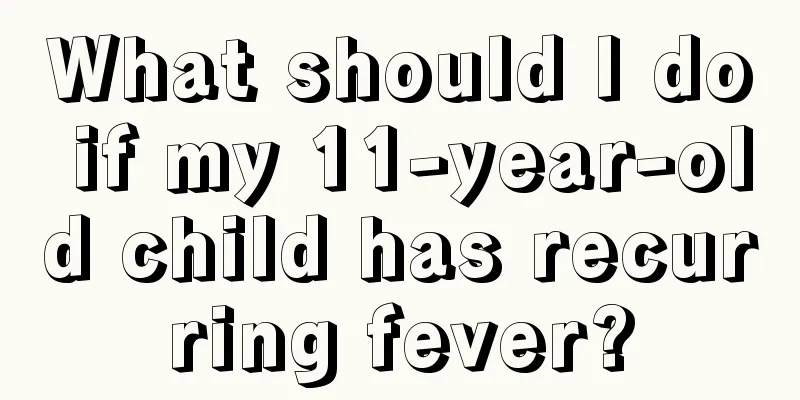What to do if your child has a persistent high fever

|
The normal basal body temperature of children is 36.9℃~37.5℃. Generally, when the body temperature exceeds the basal body temperature by more than 1°C, it is considered a fever. Among them, low fever refers to body temperature fluctuating around 38°C, and high fever refers to body temperature above 39°C. Measured through the anus, the oral temperature is generally 0.3℃~0.5℃ lower than the oral temperature, and the armpit and neck temperature is 0.3℃~0.5℃ lower than the oral temperature. What should I do if my child has a high fever that won't go away? What are the methods to reduce fever if my child has a high fever that won't go away? Experienced mothers say: If the temperature is below 38.5 degrees, do not take antipyretic medicine or get antipyretic injections, and let the baby drink more water. Pay attention to whether the ambient temperature is too high. In the hot summer, the temperature is very high and the baby's ability to regulate its own body temperature is poor. When the mother holds the baby, the heat is not easy to dissipate, causing the body temperature to rise. However, this kind of fever usually does not last too long. Put the child in a cool place, fan him slightly, give him some cool fruit juice, or give him a warm bath, and the body temperature will return to normal after a few hours. In winter, if the indoor temperature is too high and the baby is wrapped too much, the baby's body temperature will also rise. If the fever is above 38.5 degrees, please ask a doctor immediately to confirm whether it is a viral infection or a bacterial infection. If it is a viral infection, use antiviral drugs (such as ribavirin); if it is a bacterial infection, use antibiotics (such as cephalosporins). Do not rush to reduce the fever. The fever is only a symptom and the cause of the disease must be found out. Pay attention to whether there is bacterial or viral infection. 1. The main symptoms and causes are as follows: Fever and runny nose - cold (cold syndrome) Sore throat – pharyngitis, tonsillitis Continuous fever of around 39°C, bloodshot eyes and eye mucus - swimming pool fever Exhaustion and high fever in a hot place - heat stroke (sunstroke) Swollen parotid glands – mumps Ear discharge and emotional instability - otitis media Coughing and difficulty breathing – pneumonia Red gums and excessive saliva - stomatitis Vomiting, cramps, bulging fontanelle – meningitis Vomiting, convulsions, unconsciousness—pneumonia, acute encephalopathy Frequent urination and blood in urine – urinary tract infection Fever and convulsions - heat cramps 2. A few simple methods to reduce fever (1) Most babies have fevers because of catching a cold. If the baby has cold hands and feet, white tongue coating, pale face, and light urine, parents can use ginger and brown sugar water to dispel the cold. Adding two or three one-inch long pieces of green onion to the water will help the baby sweat. (2) If the baby has a fever, sore throat, yellow tongue coating, and yellow urine with a strong odor, it means that the child has severe internal heat. At this time, the child should not drink ginger and sugar water, but should drink plenty of warm boiled water. You can also add a small amount of salt to the water. When a child has a high fever that won't go away, mothers will be very nervous and at a loss. After reading the editor's introduction, do you have a clear idea? Next time when your child has a high fever that won't go away, will you know what to do? Mothers, quickly save it, take preventive measures in daily life, keep your children away from fever and fever, and grow up healthily! |
<<: Treatment for green stool in babies
>>: What are the early signs of autism in children?
Recommend
What are the symptoms of fever and convulsions in children?
Fever in children is quite common. If the fever i...
How should children's stuttering be treated?
Stuttering is a type of speech rhythm disorder, w...
How to treat a child’s fever?
Fever is the most common disease among children. ...
Can children with autism speak?
Some people think that only humans have their own...
What should I do if my child has a low-grade fever?
The physical health of children is what parents c...
Baby's stuffy nose and fever
The nasal cavity is the main channel for babies t...
Why does my baby like to sweat?
We all know that the health of every child is the...
How long does a child's menstrual period usually last?
We know that girls will have their first menstrua...
Diagnosis and classification of lead poisoning in children
Because children are young and often cannot take ...
Introduction to family rehabilitation training methods for children with cerebral palsy
Cerebral palsy in children can cause great harm t...
What are the methods of weaning children?
Everyone knows that newborn babies usually grow u...
What causes night terrors?
From birth to adulthood, sleep is very important ...
How to care for a baby who drools for more than two months
In the newborn period, babies generally do not dr...
What should I do if my baby has food poisoning? These dietary therapies are very effective
If your baby has an indigestion problem, the best...
What are the things to pay attention to when choosing a cooling patch?
Whenever the seasons change, many people with low...









